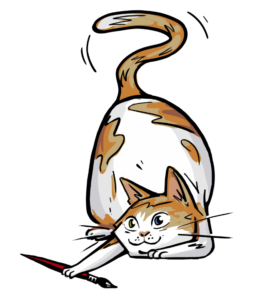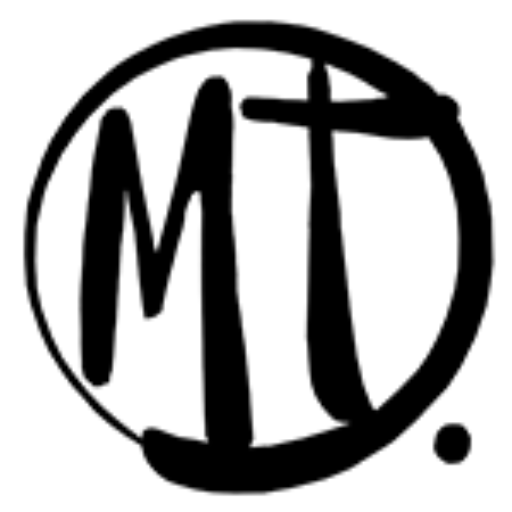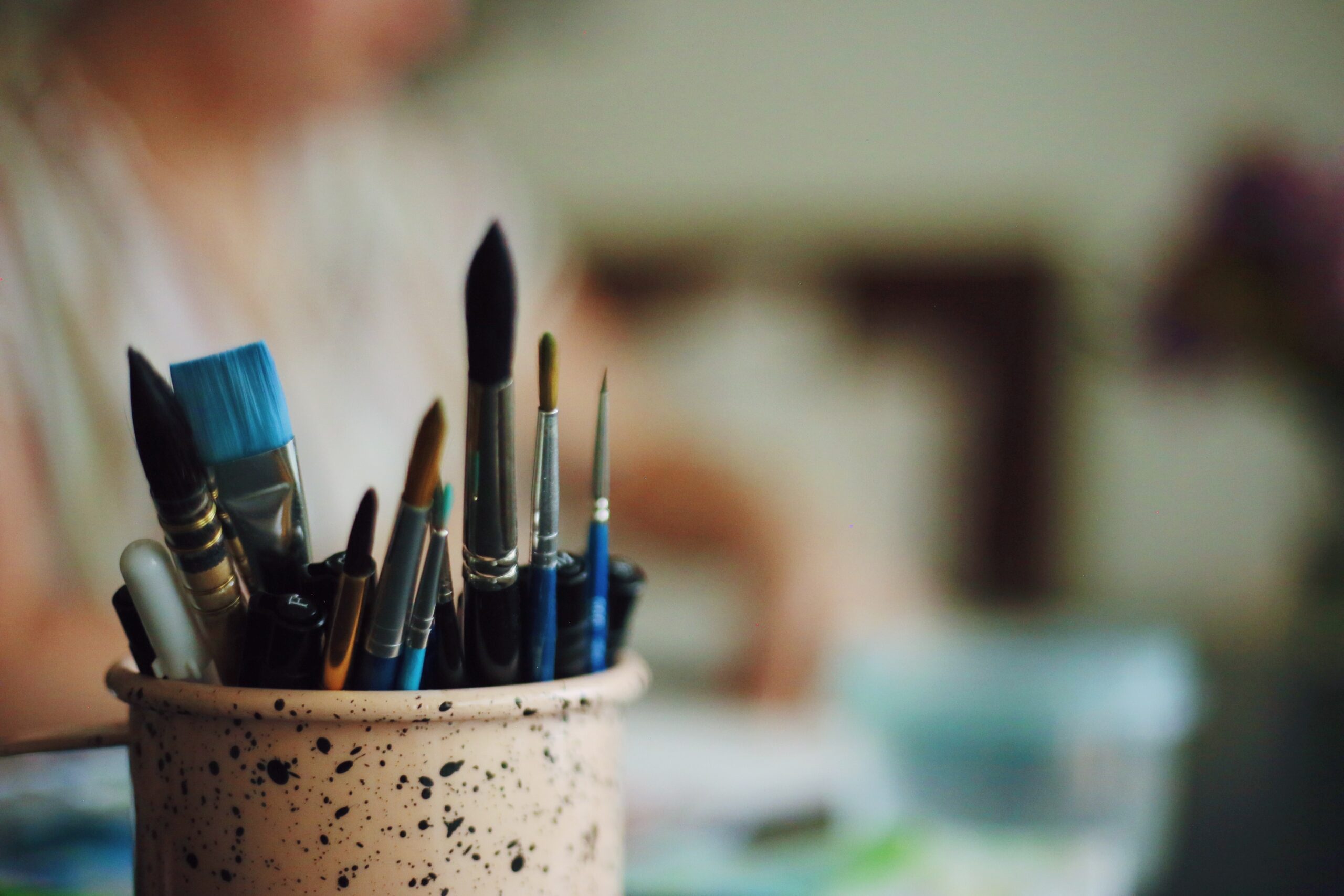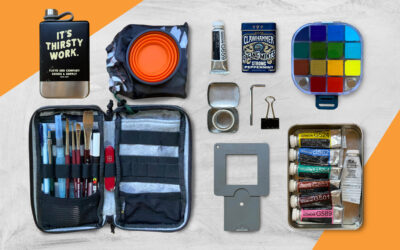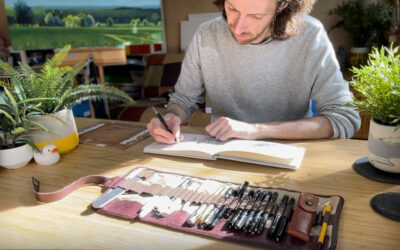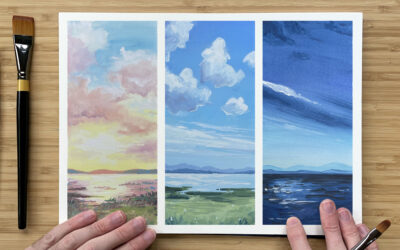Understanding the different brush shapes and fibre types can help you to make better and more informed decisions when investing in new brushes, so that you end up with tools you love working with. Today, I’m going to share some insight into the most common brush shapes, their uses and a few tips and tricks to try out yourself.
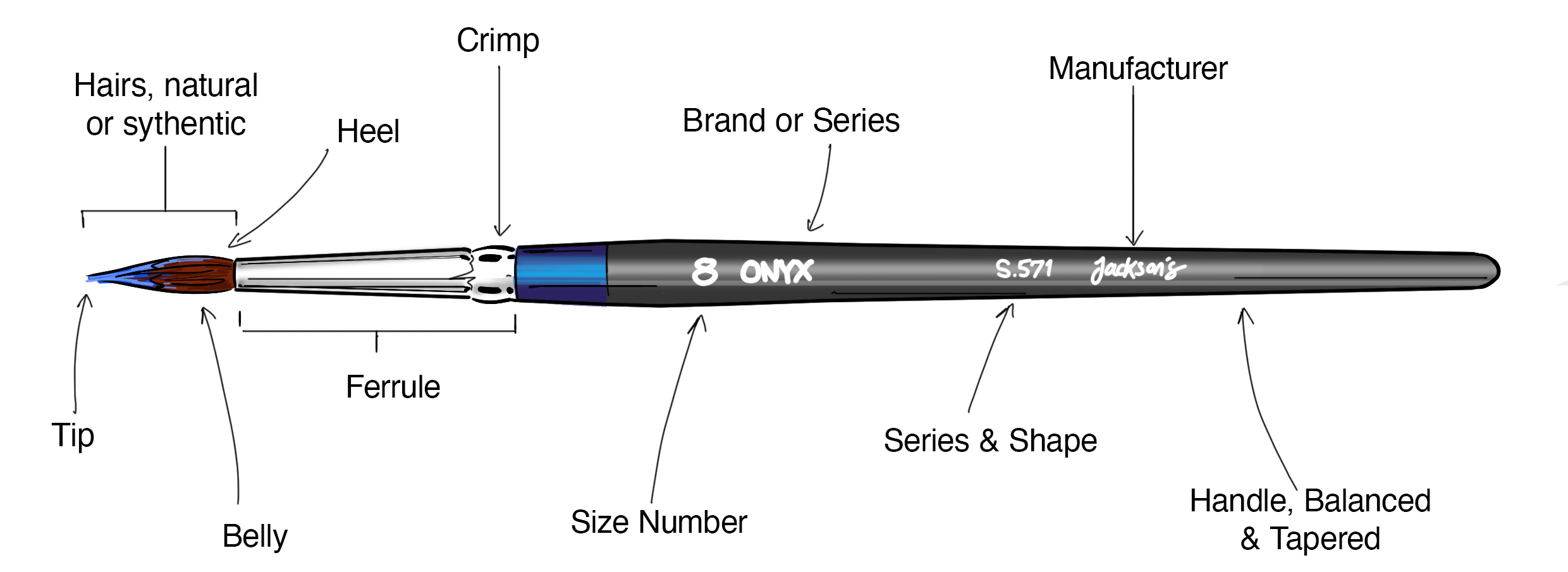
While knowing your tools is a great way to create strong foundations for your painting, the most important thing is to find the shapes and types of brushes that feel right for you. Every painter has a favourite brush and more often than not, they’ll use them for techniques and styles entirely different from what they were designed for. A good brush will last you a long time if you care for it properly, so be patient and find which ones are most effective in your own work.
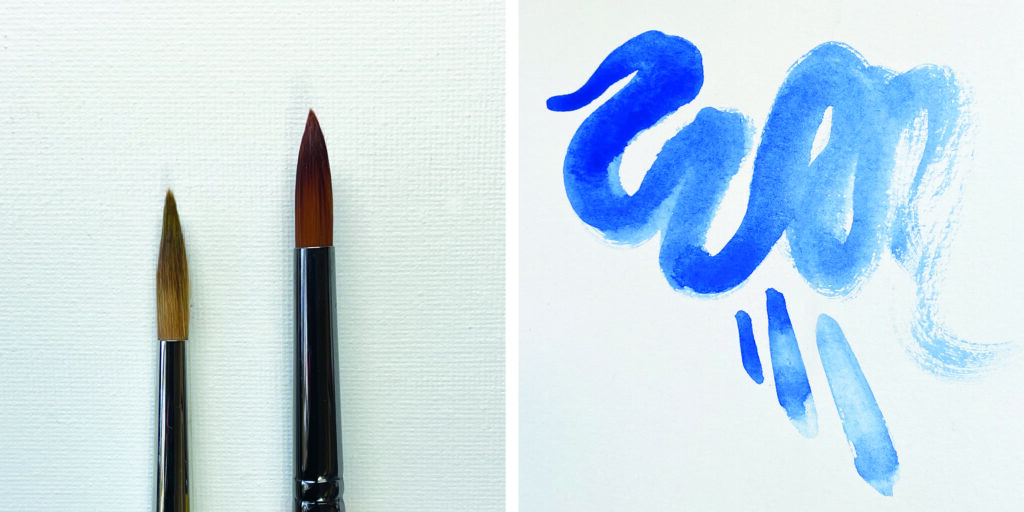
Round
Versatile pointed tipped rounds are especially useful for detail, as well as creating different line weights dependent on the pressure applied by the artist. Available in a variety of sizes and bristle types (hog, sable, pony and more, as well as synthetic versions of each) the round brush is one of the most commonly used in painting.
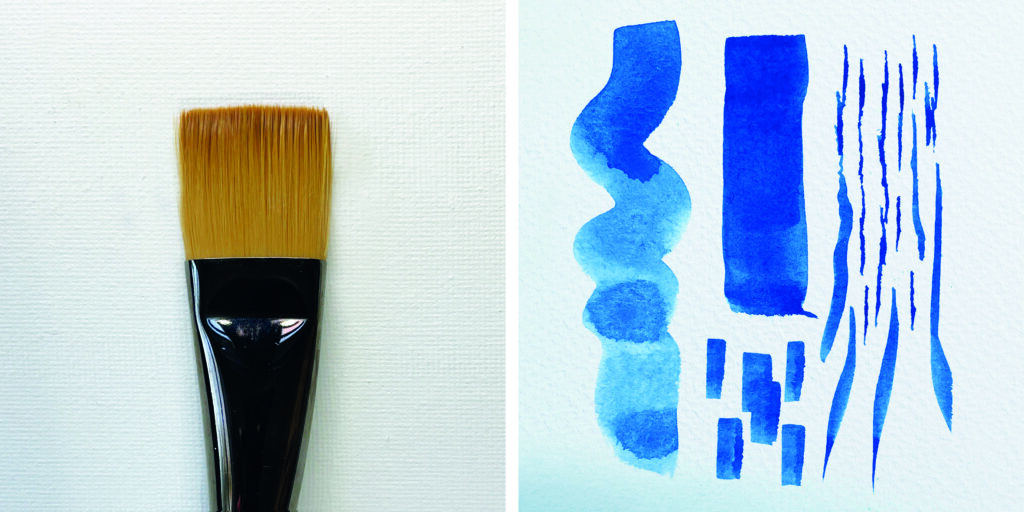
Flat
I often start my paintings with one of these larger flat brushes as they are ideal for covering large areas. I love to use them for skies or wherever a large block of colour needs to be filled. They’re also excellent for producing long, smooth strokes allowing for a sense of gesture and motion when applying paint. The smaller flat brushes are great achieving a squared edge and can also produce solid lines in varying thickness depending on weight, when used on their side.
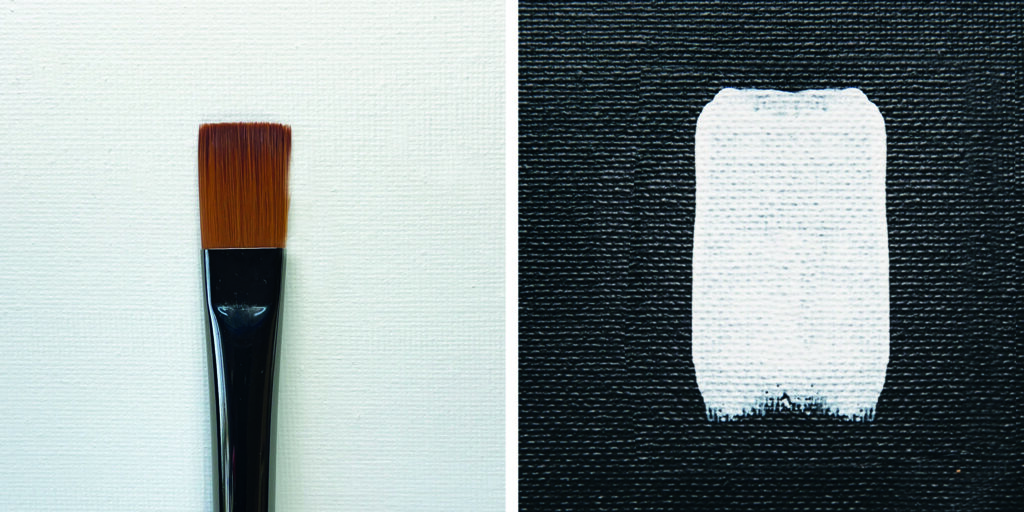
Bright
Bright brushes are pretty much a flat brush with shorter bristles. In contrast to flat brushes, brights generate more resistance with the surface making them ideal for applying short, strong strokes of colour. The stiffness of the bristles can vary depending on the fibres but brights will generally be one of the harder brushes in your arsenal, ideal for creating hard-edged textures with heavy pigment.
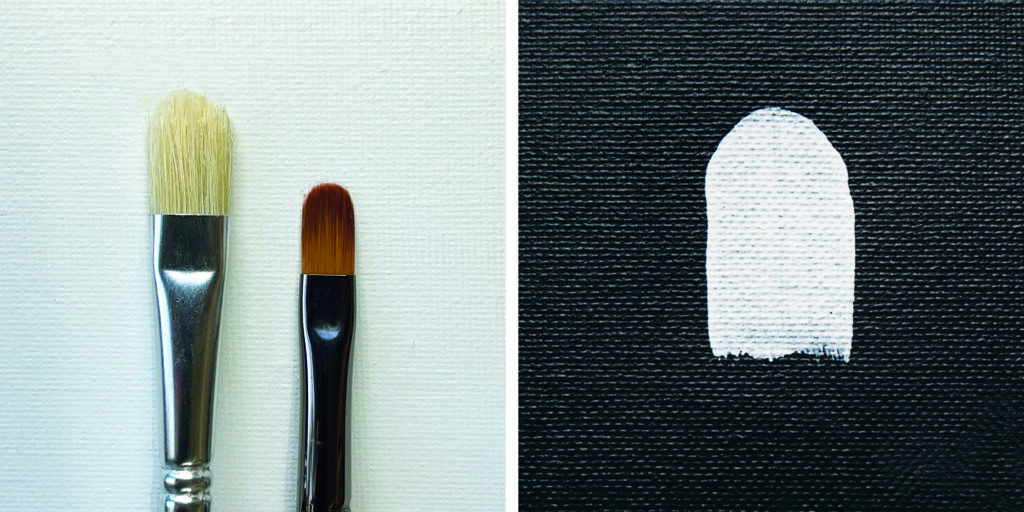
Filbert
An uncommon but rather handy brush type, Filberts are somewhere between a flat and a round. Sometimes referred to as a ‘cat tongue’ due to their shape, it is versatile because depending on the thickness of pigment and the angle at which the brush is held, you can use it both for washes and for finer detail work. Although this can be said for many brush shapes, it is a particular favourite of figurative painters as the unique arrangement of bristles in a filbert helps to maintain an expressive, painterly feel to a surface.
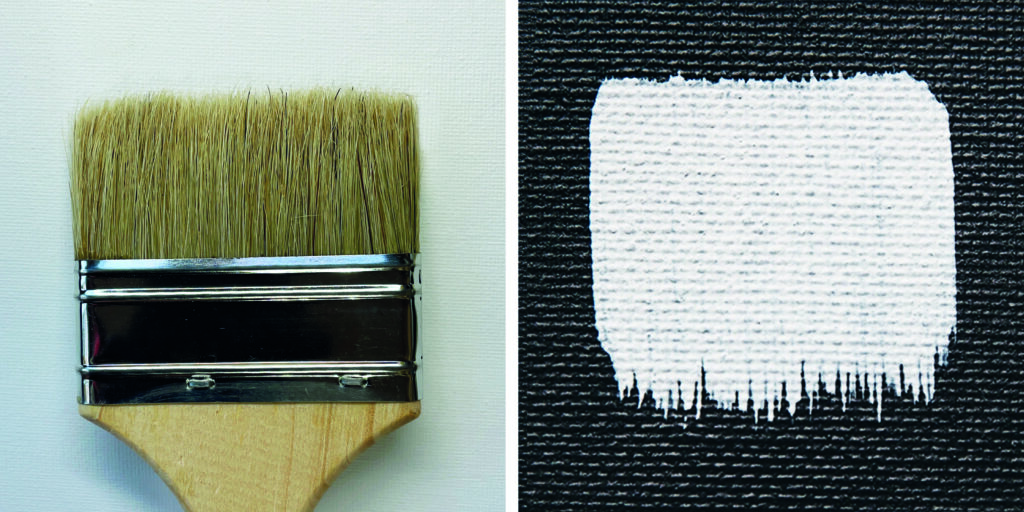
Mottler
A mottler is the artist’s brush that most resembles a typical decorators brush. They can be particularly useful whenever you need to cover a broader area due to their ability to hold large amounts of pigment. A useful shape for blocking in fields of colour, as well as under-paintings or applying varnishes. Mottlers can also achieve many of the effects typically associated with other flat brush types, commonly used on a larger scale or to cover more of a surface.
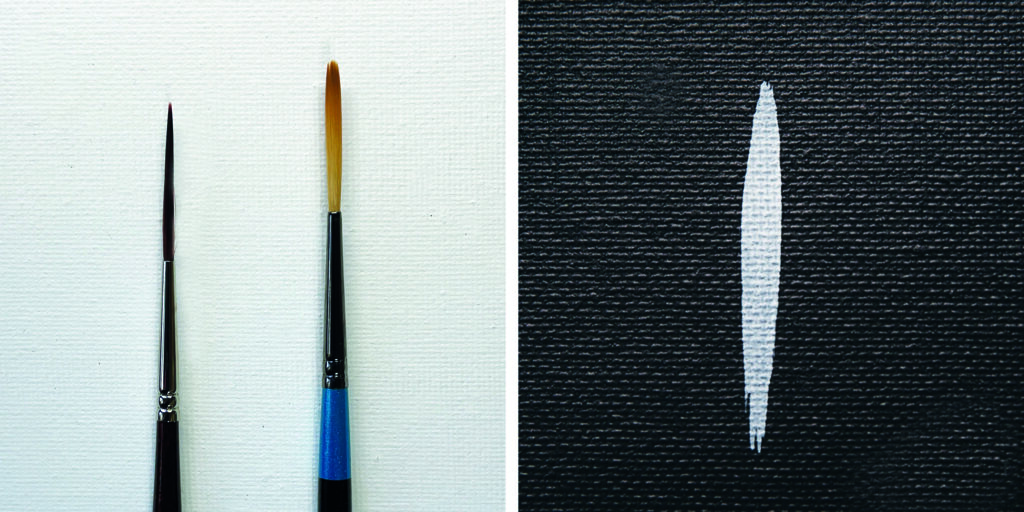
Liner
Also known as a Rigger brush most resemble round brushes except much finer, usually with longer hair. The longer hair allows the brush to carry more pigment over greater distances, creating long and flowing lines without the need to stop and reload your brush with paint. Regardless of whether it’s oil, acrylic, ink or watercolour, a liner brush is the perfect way to add detail and dynamics to your work. Another common use I like to use this brush for is lettering.
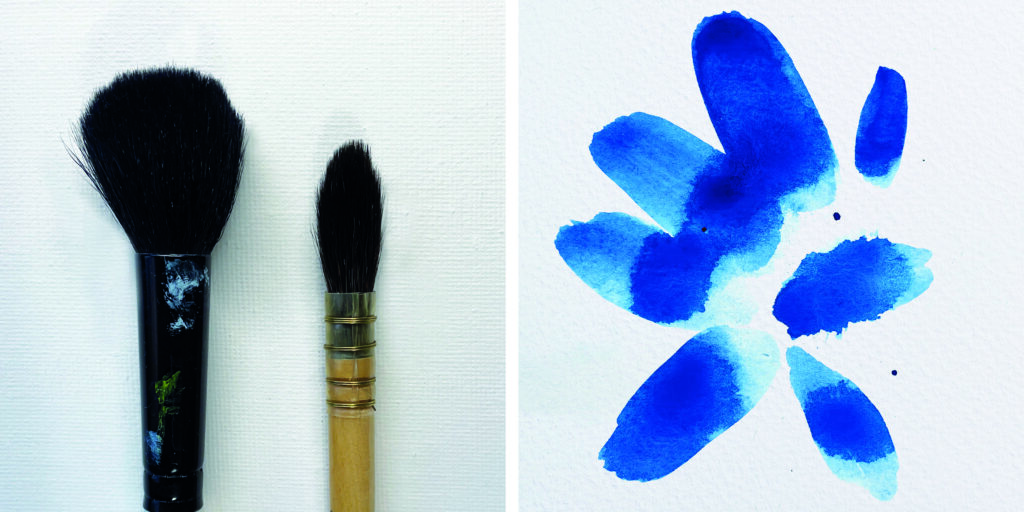
Mop
Most often associated with watercolour painting, Mop brushes are soft-bristled with a rounded head. They’re an effective brush shape for covering large areas of the surface with thin paint, referred to as a wash. Mop brushes can also be useful for blending oil paints, softening edges and helping areas of a painting fit together more naturally like when painting different shades of clouds in a sky. Due to their soft bristles and rounded tip they are also useful when glazing, as you’re not going to end up with unsightly brush marks or hard edges.
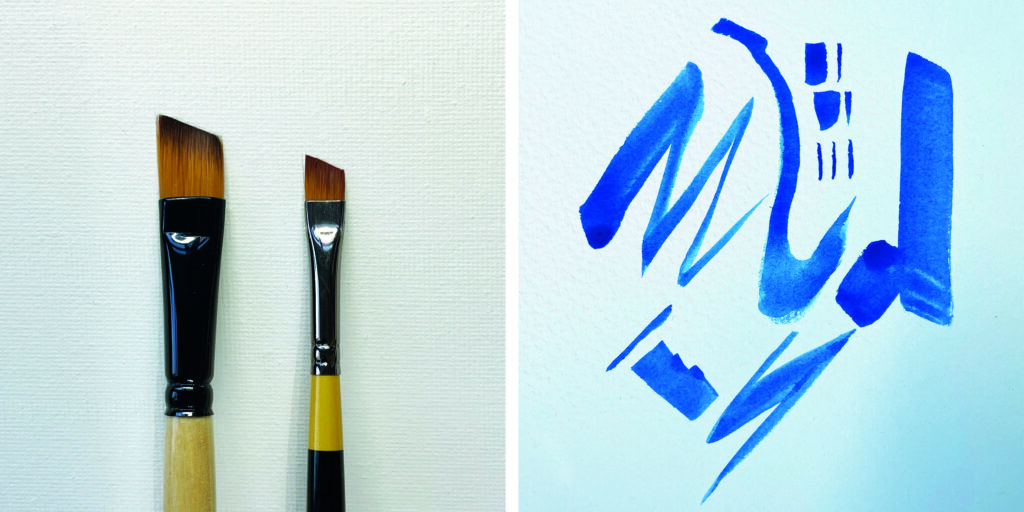
Angled
One of my favourites, an angled brush is one of the most versatile shapes in a painter’s studio. Although sometimes overlooked their shape allows for quick transitions between thin and thick lines, making them a great choice for anyone painting natural landscapes or other organic material. Whether you want to create motion in blades of grass through flicking your brush at an angle, block in an area of colour or create texture, angled brushes can be very useful.
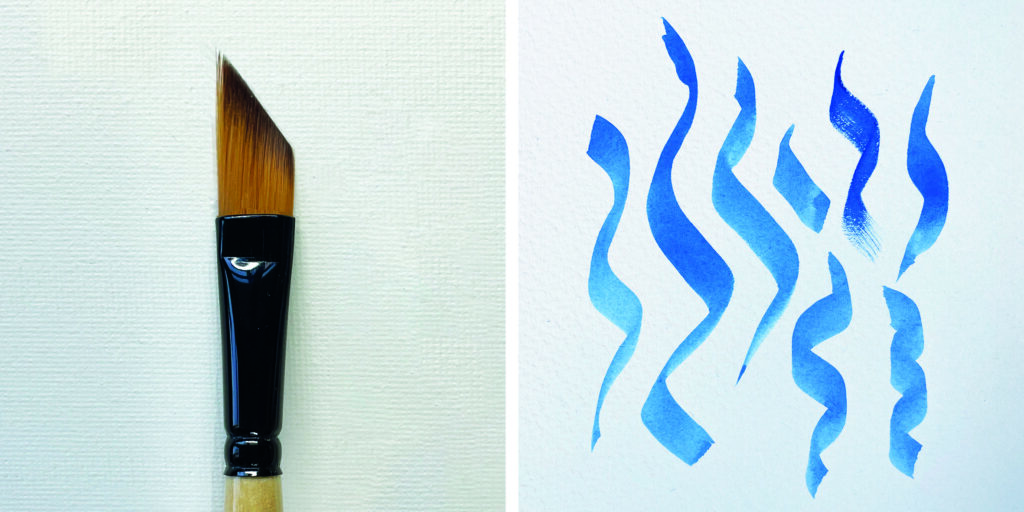
Sword & Dagger Striper
Shaped much like a filbert except with half of the bristles missing at an angle. Sword or Dagger brushes are particularly useful for creating teardrop shapes, moving from a wide rounded edge up to a finer point. They’re often used in botanical painting, helping to create shapes in flowers and leaves with a natural sense of flow. Their unique shape also means that you can load pigment in different areas of the brush and pull single marks that introduce new colours throughout the line. Particularly useful in trying to capture a sense of motion or when creating abstract work.
A dagger striper is essentially the same shape except featuring a more defined angle of cut on the bristles. These brushes, as the name would suggest, are excellent when looking to paint lines or stripes.
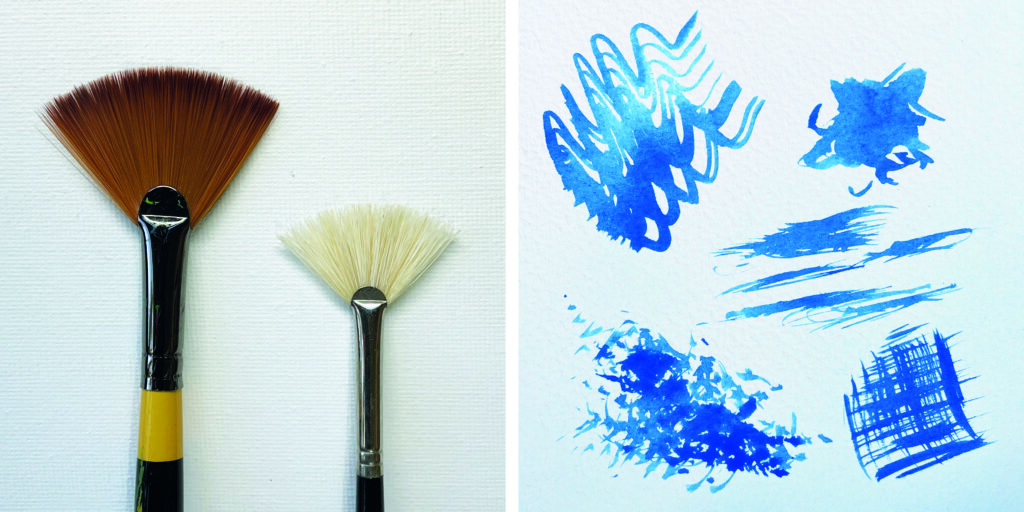
Fan
The brush with the best haircut is a tricky one to learn how to use. Fan brushes are soft bristled, and as the name would imply, shaped like a traditional hand fan. They generally have thinner bristles, lightly layered so as to avoid picking up too much pigment, making fans a useful brush shape for blending paint already on the surface – In particular areas where you’re looking for a blurred effect or to make a gradient change appear smooth and subtle.
That being said, fan brushes are more than just tools for blending. They’re equally useful as a brush for adding texture. It can also be used in softly applied strokes for hair or suggesting rainfall. I like to gently tilt the brush in a tapping motion rather than drag it over the canvas. By stippling paint it’s great for creating the tips of blades of grass, whispers of clouds or the sparkles reflecting on water.
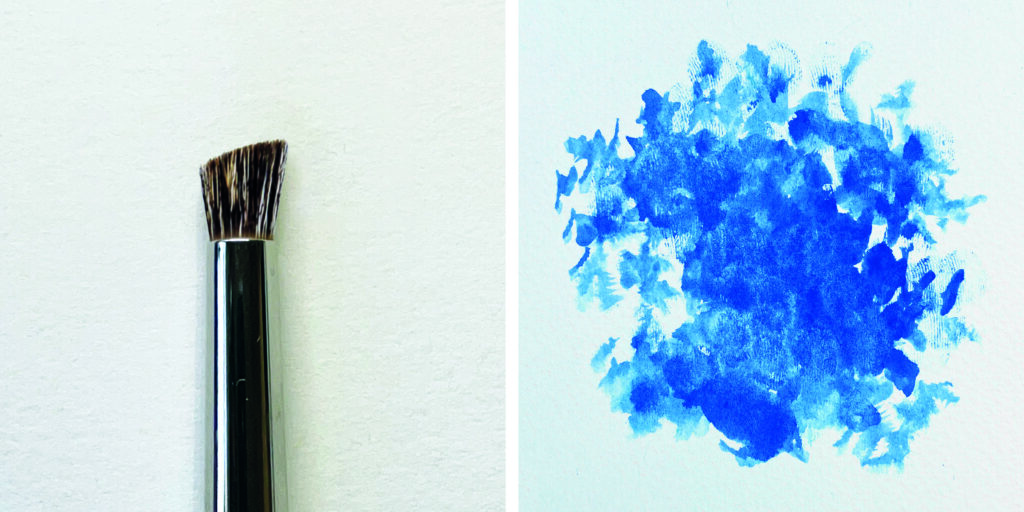
Stippler
Featuring short, rounded heads, Stipplers come in a variety of densities dependent on the hair used to make the brush. Often used in painting foliage or fur, stipple brushes are a shape most associated with creating texture. When used in a dabbing motion, this shape is able to create dense, wiry textures dependent on the colours used as well as the speed.
Due to their prowess in producing texture, stippling brushes can be a useful tool for making both abstract and representational pictures. Depending on the hardness of the bristle type you choose, your brush will produce different textures – stiff hog hair would provide a more resistant stippler, whereas lighter bristles would allow for the tip of the brush to fan out more in the application of pigment. This makes a stippler a fun brush to experiment with, exploring the different textures you can achieve and how they work within a painting.
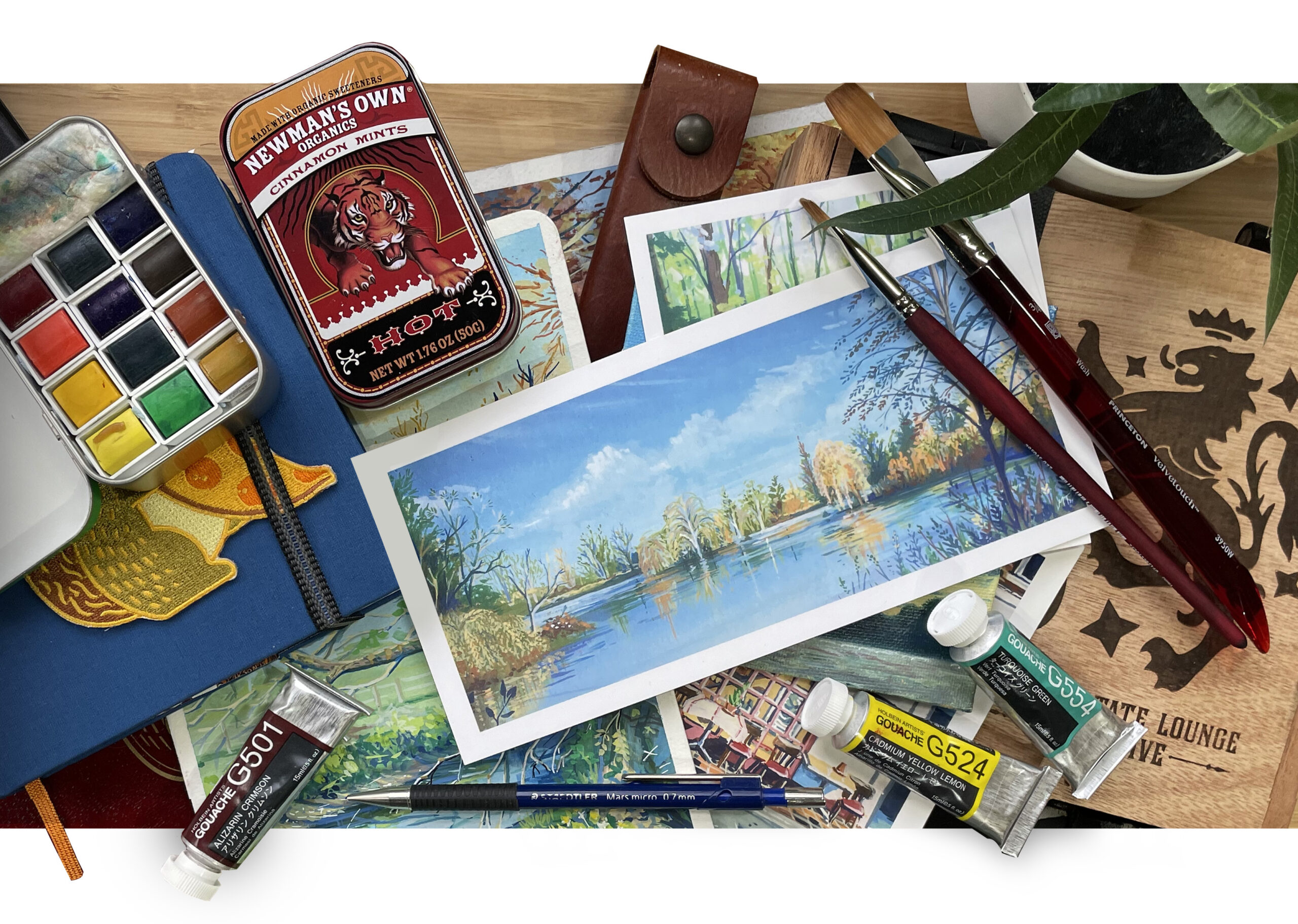
‘Well loved’
Finally, let’s give some attention to the brushes that have been with us the longest. Probably found in a jar, used and often abused, they’ve been through the ringer. However are now filled with wonderfully unique characteristics that might just be perfect for what you are painting. I have an old dried Ikea decorating brush that creates the most wonderful expressive scratchy texture. Another that seems to have split down the centre like a snake’s tongue, making it bizarrely perfect for painting double yellow lines at the side of the road.
These are the tools that can only be acquired from good hard work over time. Uniquely yours and all the quirks and delights we treasure in good friends. So pick them up and show them you still care by diving into a fresh painting!
P.s If you don’t have any old brushes, don’t worry. Just use a new one and it’ll probably be a faithful veteran by the time you’re done.
